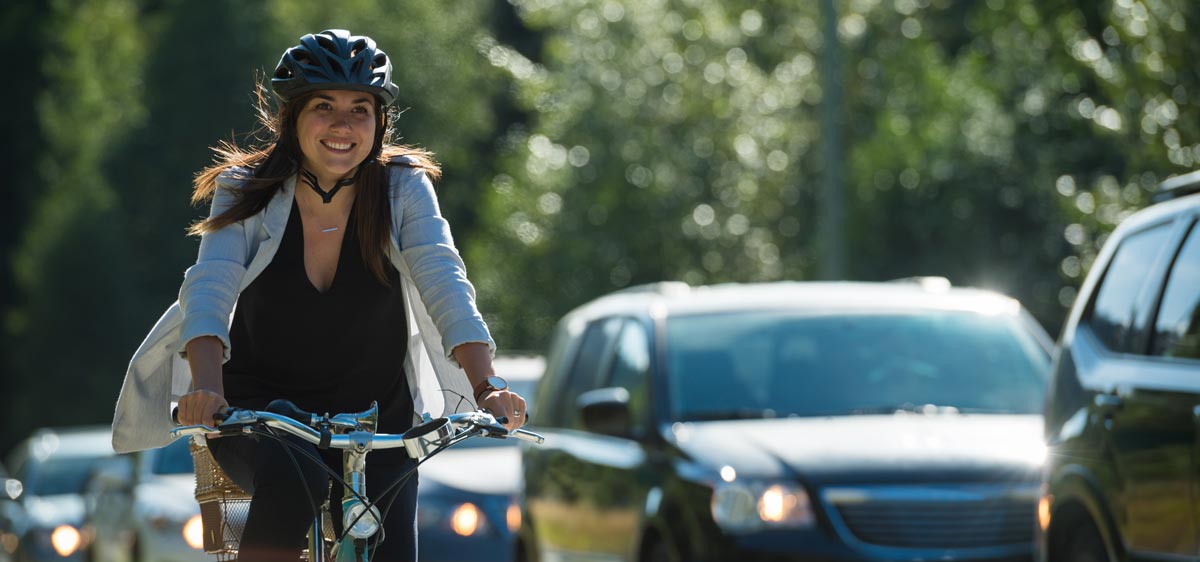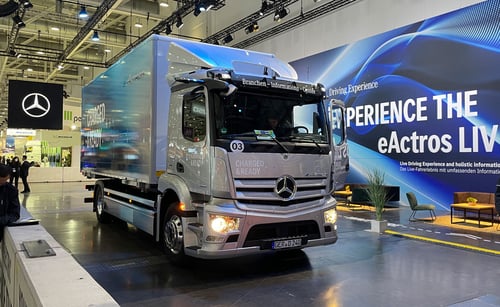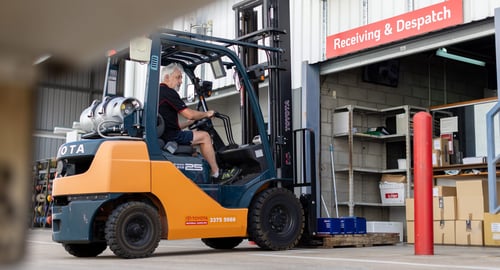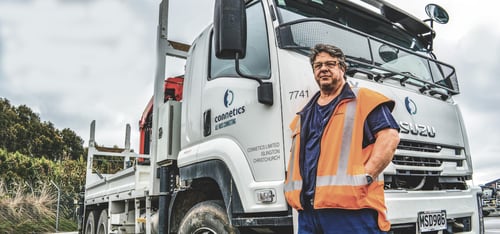Over the coming decade, Australia is aiming to transition our major urban areas into safer and more liveable free-flowing cities. Four key factors will influence the attainment of that vision.
In our recent Bicycles are Benefiting our Cities article, we outlined how COVID-19 had led to a dramatic uptake in cycling across Australia – and how this could likely be a catalyst that changes many aspects of our society for the better. In this article, we explore four key inter-related levers that need to be applied – and in some cases are well underway – in order for that to happen. Those levers being:
- Better Road/ Pathway Infrastructure
- Reduced Speed in cities
- Safer Heavy Vehicles and Management in our cities
- Education
1. Better Road/ Pathway Infrastructure
In the National Road Safety Strategy 2021–30 – the final document to be tabled later this year – a “Movement and Place” framework will determine road planning for the next decade. Motorways and transport corridors will be for fast “movement” with little or no “place” function, whereas vibrant city streets, local streets, and shared zones will be all about “places” for people, and the emphasis will be on slow “movement” (of vehicles). This will be a key catalyst for safer more liveable cities.
2. Reduced Speed
Poor road design, lack of proper infrastructure and the general speed of motor vehicles can be a deterrent for bicycle riders. As the common road safety message goes: speed kills. The opposite is also true: Lower speeds save lives. In Queensland only 11% of bicycle accidents occur when vehicles are doing speeds under 40km/hr– so approx. 90% occur above 40km/hr.
The QLD Department of Transport & Main Roads (TMR) Guideline for Bicycles and Heavy Vehicles, 2019, notes: in areas where roads and streets attract high levels of pedestrians and bicycle riders, councils may adopt speed limits of 30 km/h or 40 km/h to reduce the risk of serious injury in crashes involving bicycle riders / pedestrians and vehicles / HVs.
3. Safer Heavy Vehicles and Management in our Cities
When it comes to heavy vehicles and what more can be done to make these safer, there are two key aspects:
i. Management of heavy vehicles on roads (particularly in built up areas – shared places)
ii. Preventive and protective safety technology on heavy vehicles
The majority of road accidents that heavy vehicles are involved in tend not to be caused by the truck driver, however when a heavy vehicle hits a VRU, the accident is generally more serious due to the weight of the vehicle.
Over the past five years there has been a major rethink on how heavy vehicles can be designed to be safer for drivers and other people on the road. While some of these designs are now on the roads in Australia, by world standards Australia has an old heavy vehicle fleet which is not as safe as it could be. Most heavy vehicles have extensive blind spots which many vulnerable road users – and car drivers as well – are not aware of.
That said, there are many vehicle safety features that can be installed to reduce incidents or the severity of injury from an incident between HVs and VRUs. These include:
- Under run protection fitted to heavy vehicles to deflect VRUs
- Blind spot minimisation and elimination technology (mirrors, sensors and cameras with driver alerts)
- Exterior audible warnings to VRUs
- Prominent signage highlighting blind spots
- Park brake alarm, autonomous emergency brakes and other measures.
Across Australia, some states – like Queensland – are suggesting these types of solutions CAN BE fitted to heavy vehicles – however they do not appear to have any compliance aspects, deadlines or register of qualified providers. The National Heavy Vehicle Regulator is yet to set or enforce safety guidelines. Local Government Authorities are encouraged to award development and other contracts to organisations that have implemented additional safety precautions on their vehicles and whose drivers have undertaken training on blind spots and VRUs.
In Victoria, Melbourne Metro, working with the Bicycle Network, Australian Trucking Association and other stakeholders, has become a leader in setting safety standards around heavy vehicles on Melbourne roads. Source
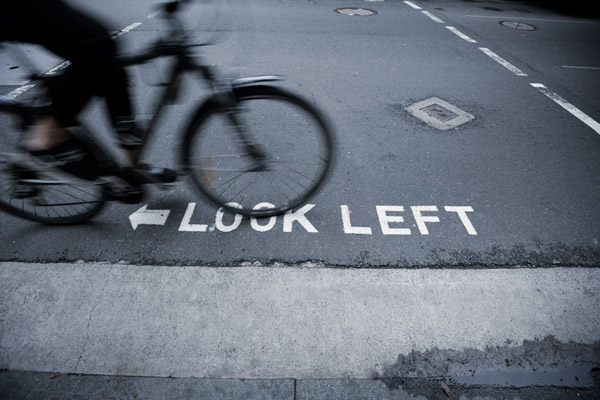 As an innovator of heavy vehicle safety solutions, SGESCO-MAX has created the MAX-SAFE Safety Eco-system™ a system of blind spot detection technologies – provided by radars, lidars and cameras – along with audio alerts that make drivers aware of vulnerable road users and helps alert VRUs of imminent danger.
As an innovator of heavy vehicle safety solutions, SGESCO-MAX has created the MAX-SAFE Safety Eco-system™ a system of blind spot detection technologies – provided by radars, lidars and cameras – along with audio alerts that make drivers aware of vulnerable road users and helps alert VRUs of imminent danger.
We work with new vehicles coming into the market and also existing vehicles – for organisations that realise they need to do more to improve safety and protect vulnerable road users, drivers, passengers and siteworkers.
As there are more cars on the roads, cars have led the way when it comes to safety technology – you just have to consider reversing cameras – for the last five years every new car has had them as standard. This is not the case for heavy vehicles when they roll off the production line.
It is often at the discretion of Fleet Managers and what they specify for their heavy vehicles. Typically, a heavy vehicle is sold as a cab chassis and as the customised body is fitted, the blind spot solution is designed to fit in and integrate with the body. In this way, truck manufacturers and their customers are actively adding safety technologies that are in line with solutions built for cars.
These heavy vehicle safety solutions are becoming increasingly sophisticated, using camera-AI (artificial intelligence) based technologies, which can for example, determine the difference between an object and human and link with passive and active systems. A passive system can warn a heavy vehicle driver of an approaching VRU. An active system not only warns the driver but can actively brake or slow a vehicle before the driver has time to take action. It is these types of measures that are going to make it safer for VRUs and heavy vehicles to exist in harmony on our city roads, and ultimately create safer, more liveable cities.
EDUCATION
Greater awareness, education and training as to how we share our roads needs to be encouraged and, in certain cases, mandated for three specific groups:
- Cyclists and motorbike riders
- Car drivers
- Heavy vehicle drivers.
This becomes the responsibility of government departments, peak bicycling / motorbiking bodies, and peak heavy vehicle bodies. In some locations this is already happening to varying degrees.
For example, The Amy Gillett Sharing Roads Safely training program for Light and Heavy Vehicle Drivers, and Bicycle Network’s Swapping Seats Campaign in Melbourne in 2018, and the INSTRUCKTA semi-trailer educational in WA.
THE GREAT RESET
As many leaders around the world have noted, COVID-19 is providing an opportunity for us to change certain aspects of our society for the better.
Fostering a stronger bicycle riding community, creating more liveable cities, reducing vehicle emissions, facilitating smarter cycling and heavy transport pathways, ensuring safer heavy vehicles and improving outcomes for Vulnerable Road Users are key interrelated opportunities. Nearly everyone has a friend or family member who rides a bicycle on the road. We need to do more to make it safer for all.
